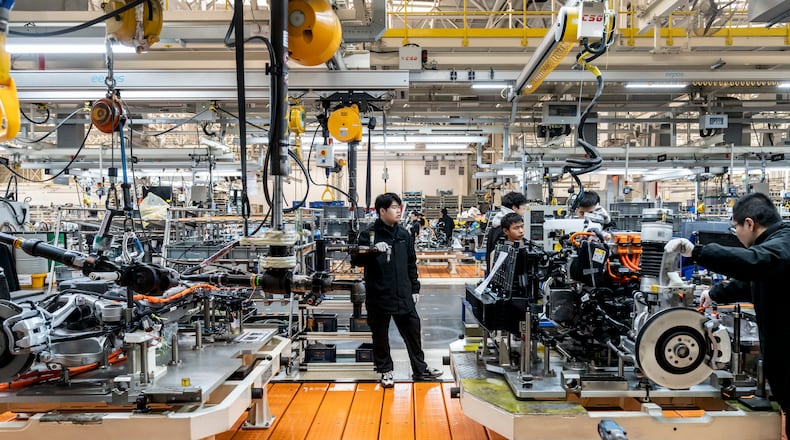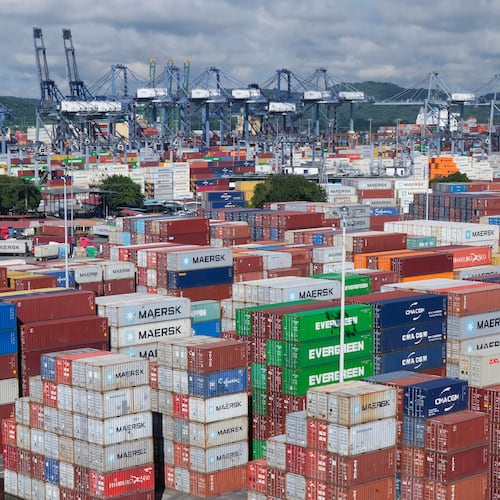For decades, the United States engaged China less as it was and more as we imagined it could become. First as student, then partner and, eventually, reformer-in-waiting. We projected hopes of gradual liberalization — that exposure to global markets and Western institutions would, over time, turn China into a stakeholder in the U.S.-led order. In doing so, we cast ourselves as mentor and China as an ambitious apprentice.
It was our own geopolitical version of the Anakin Skywalker arc: We believed the student would follow the teacher’s path — until it became clear he had been blazing one of his own.
China was never waiting to be converted. It was never benign, and never blindly adversarial, either. It was a rising power studying the architecture of U.S. influence and quietly learning to apply the same tools: capital, leverage, alliances and time. The failure wasn’t that China changed. It’s that our assessment was always flawed.
We have not been outpaced by Beijing because it outmaneuvered us in some decisive moment. We’ve been falling behind for years — through bipartisan neglect, overreliance on market forces and the illusion that rhetorical consensus equaled strategic clarity.
Credit: NYT
Credit: NYT
Presidents’ policies failed to meet the moment
Then-President Barack Obama bet on patient integration. President Donald Trump in his first term veered into impulsive confrontation. Neither built the foundation for enduring competition.
The Biden administration began to shift U.S. policy — reviving industrial policy through the CHIPS Act, the Inflation Reduction Act, and targeted investments in supply chains and green technology. But it was cautious, fragile and poorly explained to the public. No enduring doctrine was built around it. No political infrastructure was assembled to protect it. As a result, the effort proved vulnerable — reversible with a change of administration. And under Trump, that reversal came fast.
Trump’s impulsively imposed tariffs — framed as a necessary reckoning with China but levied broadly against 57 trading partners — became the clearest symbol of America’s collapse of strategic direction.
China was hit hard, but the real exposure was our own: a reactive, chaotic policy disconnected from any coherent plan for competing with Beijing or sustaining global leadership.
China, by contrast, achieved what we never organized: alignment between ambition and execution. It mapped where the global economy was headed, subsidized the industries that would define it and embedded itself in the infrastructure of other nations’ development. We warned about dependence. China constructed it.
America’s form of government puts it at a disadvantage
While we rehearse cliches about China’s long game, Beijing continues to make the cliché true — by matching ambition with execution.
Beijing doesn’t win by being perfect. It wins by being consistent. It declares a goal, funds it, adapts along the way and recalibrates its institutions to deliver. It doesn’t always succeed. But it has internalized a lesson we’ve discarded: Long-term strength is built through continuity, coordination and patience.
China can direct capital to a strategic sector without waiting for a committee markup. It can fund five-year initiatives to dominate electric vehicle manufacturing or become indispensable in solar panel supply chains. Its leadership doesn’t worry about a change in control of the legislature halfway through an investment cycle. It mandates. It finances. It builds.
We announce initiatives, hold press events and promise resilience — while designing policies that expire with the next election.
The danger isn’t just that this administration pursues a strategy of grievance instead of a strategy of victory; it’s that we have allowed our politics to unlearn how to build at all.
U.S. reacted and performed rather than show leadership
Our weakness lies not in a single leader or party, but in a political culture that treats governance as performance and strategic patience as surrender. If we continue on this path, it won’t be because China outsmarted us. It will be because we dismantled the architecture of American strength ourselves — and did so without even bothering to notice.
Some will argue this is uniquely Trumpian. It’s not. The inability to turn bipartisan agreement into coherent strategy predates him. His second term hasn’t caused the collapse; it has exposed how hollow the structure already was.
When it mattered, we didn’t rebuild manufacturing. We didn’t reinforce the global structures we had built. We didn’t finalize a trade alternative to Belt and Road — China’s massive program of building ports, railways, and infrastructure across Asia, Africa and beyond. Efforts such as the Trans-Pacific Partnership never developed into a credible economic counterweight.
We didn’t redefine what global leadership should mean once the liberal order began to stall. Instead, we kept reacting — and mistaking performance for resilience.
Will politicians keep playing the blame game or will they govern?
On May 12, Trump walked backed his most extreme tariffs — not as part of a strategic recalibration, but under pressure, in exchange for a 90-day cooling-off period. The announcement, hailed as a breakthrough, masks what it really is: a negotiated timeout between two governments whose underlying strategies remain unchanged. Beijing, steady and methodical. Washington, reactive and performative.
Even if some semblance of a stable trade deal is eventually secured, the damage to America’s economic statesmanship is done. The lost trust, the stalled investment cycles, and the strategic drift of the past decade have already left scars that won’t be easily reversed.
China, too, will suffer costs. But it is structured for recovery — disciplined, coordinated, strategically patient. The United States is not. When the dust settles, Beijing will still have a plan. We will still be arguing over who to blame.
If America wants to compete, it doesn’t need another round of punitive measures. It needs a memory of how it used to build — and a political class willing to stop setting fire to the scaffolding of national strength just to prove they were here.
We don’t need to become China. But we do need to stop sabotaging ourselves.
U.S. influence isn’t lost; but it will need to be earned back. After World War II, we led the reconstruction of devastated allies through the Marshall Plan — not only to rebuild Europe, but to cement a democratic order rooted in trust and shared purpose. Today, that trust has eroded. Restoring it will require a new kind of reconstruction — not of cities, but of alliances. We must show our partners that American leadership still values cooperation over coercion and is willing to share influence, not hoard it.
Rebuilding strength also requires letting go of magical thinking. Tariffs, slogans and industrial nostalgia won’t outcompete China. Long-term leverage demands reinvestment in education, manufacturing, energy and research — protected from partisan sabotage and “short-termism.”
And we must stop pretending this is a second Cold War. China is a rival, not a monolith. We will compete — often bitterly — but on AI governance, climate stability, trade norms and crisis response, the world cannot afford economic decoupling. Managed interdependence, rooted in verifiable standards and shared risk, is the only way to prevent lasting fracture.
Finally, both political parties must stop mistaking partisan theatrics for strategy. Democrats cannot wait for a favorable electoral map in 2026 or 2028. They must begin governing through influence now — by articulating serious proposals on industrial renewal, alliance repair and global standard-setting.
Republicans, meanwhile, must accept that tariffs and televised bravado are not strategy — they are delayed tactics. They must offer a governing framework, not culture war sound bites. Congress cannot reverse course alone, but it can reassert relevance and slow the damage.
The next president won’t shape the rivalry. They’ll inherit its terms. And if we continue on this path, China won’t need to defeat us. We’ll have finished the job ourselves.
Credit: Bill O'Neill/contributed
Credit: Bill O'Neill/contributed
Brian O’Neill is a retired CIA executive who has served in such leadership roles as deputy director of analysis at the National Counterterrorism Center and as executive editor of the President’s Daily Brief. He now teaches national security at Georgia Tech and contributes to the journal “Just Security” and other outlets.
About the Author
Keep Reading
The Latest
Featured





